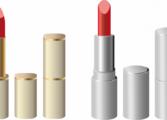Foundation rosacea: A Comprehensive Guide for Mat Enthusiasts

Introduction
Rosacea is a common skin condition that affects millions of people worldwide. Among its various symptoms, the appearance of redness and inflammation on the cheeks, nose, forehead, and chin can be particularly distressing for individuals. Many people turn to foundation rosacea as a solution to conceal this redness and achieve a more even skin tone. In this article, we will provide an in-depth overview of foundation rosacea, exploring different types, popular choices, quantitative measurements, differences between them, and a historical examination of their pros and cons.
Understanding Foundation Rosacea

Foundation rosacea refers to a specific type of foundation formulated to address the needs of individuals with rosacea. Unlike regular foundation, these products aim to provide not only coverage but also a gentle, soothing, and non-irritating formulation. They often contain ingredients that help calm inflammation and minimize redness, such as green tinted pigments or anti-inflammatory agents like chamomile. Furthermore, foundation rosacea is typically fragrance-free and hypoallergenic, making it suitable for sensitive skin.
Types of Foundation Rosacea
Various types of foundation rosacea exist in the market, catering to different preferences and skin types. Mineral-based foundations have gained popularity due to their natural ingredients and light-reflecting properties, which can help distract from redness. Liquid foundations, on the other hand, provide more coverage and are easily buildable. They come in a wide range of shades, ensuring a match for various skin tones. Cream foundations are thicker in consistency and offer higher coverage, making them suitable for individuals with significant redness. Lastly, powder foundations provide a mattifying effect and are ideal for those with oily skin.
Quantitative Measurements for Foundation Rosacea
When selecting a foundation rosacea, it is important to consider factors such as coverage, longevity, and compatibility with your skin type. Coverage can be measured on a scale from sheer to full, with sheer providing a more natural look and full coverage offering a more flawless finish. Longevity refers to how well the foundation holds up throughout the day, with longer wear time being preferable. Finally, for individuals with dry or oily skin, choosing a foundation rosacea that is compatible with their skin type is crucial to ensure comfort and longevity in wear.
Differences between Foundation Rosacea
Foundation rosacea products differ in several key aspects. Firstly, the texture varies, with some products being lightweight and easily blendable, while others have a thicker consistency. Coverage levels also differ, as some foundations provide a sheer, lightweight finish, while others offer medium to full coverage. Additionally, ingredients play a significant role in the differences among foundation rosacea products. Some contain soothing agents like aloe vera and chamomile, while others focus on ingredients with anti-inflammatory properties, such as niacinamide or green tea extract. Choosing the right foundation rosacea depends on individual preferences and needs.
Historical Examination of Pros and Cons of Foundation Rosacea
Over the years, foundation rosacea has evolved, offering individuals with rosacea improved options for concealing redness. In the past, many products could exacerbate the condition due to their irritating ingredients or heavy formulations. However, advancements in skincare and makeup technology have led to the development of more gentle and effective foundation rosacea. The pros of modern foundation rosacea include improved coverage, long-lasting wear, and the integration of skincare benefits. However, some individuals may find that certain foundation rosacea products do not match their skin tone or have limited shade ranges, which may be considered a disadvantage.
[INSERT VIDEO HERE]
Conclusion
In conclusion, foundation rosacea provides a solution for individuals seeking to minimize the appearance of redness associated with rosacea. With various types and formulations available, it is essential to select a product that suits individual needs in terms of coverage, longevity, and compatibility with skin type. Though foundation rosacea has seen significant improvements over the years, it is important to weigh the pros and cons of each product to make an informed decision. By understanding the nuances of foundation rosacea, individuals can confidently choose a product that enhances their natural beauty while providing relief from the visible symptoms of rosacea.
















































